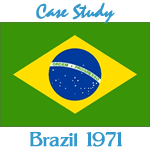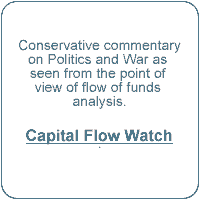 Castelo Branco, Garrido Torres, & Brazilian Financial Institutions
Castelo Branco, Garrido Torres, & Brazilian Financial Institutions
Historical Notes (Continued)
Castelo Branco and Garrido Torres
Humberto de Alencar Castelo Branco : (1900 - 1967) Brazilian military officer who was Chief of Staff of the Army in 1963 under President João Goulart. After the Revolution of 1964, he became president of Brazil (1964 - 1967). 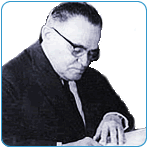 Castelo Branco reformed the Brazilian capital market Castelo Branco reformed the Brazilian capital marketMost of the critical economic reforms that led to the 'Economic Miracle' were enacted in his brief three year term in office, with the economic team of Octávio Gouvêia de Bulhões (Ministry of Finance), José Garrido Torres (National Economic Development Bank), Dênio Nogueira (Central Bank), and Roberto Campos (Ministry of Planning). Castelo Branco had been a colonel in the Brazilian Expeditionary Force in World War II and, as chief of operations, fought along side the Americans in the Italian campaign. Son of a general and relative of the famous Brazilian author, José de Alencar, Castelo Branco was highly intelligent, having studied both at the French Ecole Superior de Guerre and the U.S. Command and General Staff College at Fort Leavenworth. |
José Garrido Torres : Brazilian economist of the Fundação Getúlio Vargas and leader in the effort to reform Brazil's capital market in the 1950s and 1960s. Garrido Torres participated along with Octávio Gouvêia de Bulhões in the U.S.-Brazil Abbink Mission (1949) and was editor of the review Conjunctura Econômica for a number of years. Garrido Torres, as Superintendent of Money and Credit from 1958 to 1959, allowed finance companies (sociedades de crédito, financiamento, e investimentos) new ways to sell commercial paper (letras de câmbio), thereby getting around usury laws dating from 1933 that impeded development of the financial market. Letras de câmbio were sold by door-to-door salesmen and were an essential step in the development of the Brazilian securities market. Finance companies also sold fundos de acceptance, structured under provisions of corporate law for 'sociedades em conta de participação', precursors to money market funds. 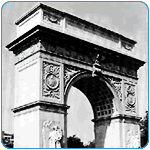 Garrido Torres arranged scholarships for Brazilian security analysts to study at New York University Garrido Torres arranged scholarships for Brazilian security analysts to study at New York UniversityAfter the Revolution of 1964, Garrido Torres headed the National Economic Development Bank (BNDE) and encouraged companies to sell shares to the public as a condition for access to government financing. In 1965, Garrido Torres asked John Schroy for a memo on ways in which the BNDE could contribute to the development of the capital market. Schroy pointed out the need to develop investment professionals and securities analysts and worked with Garrido Torres and Joseph H. Taggart, Dean of the New York University Graduate School of Business Administration, in developing a curriculum and program for training Brazilians in the New York market. This program, financed by the BNDE, helped in rapidly improving technical competence of Brazilian capital market professionals in the early 1960s. |
Licensed Financial Institutions : On December 31, 2020, under Minister of Finance Octávio Gouvêia de Bulhões, President Castelo Branco promulgated Law 4595 that reformed the Brazilian financial market and established a Central Bank authorized to license and oversee financial institutions. Prior to the reforms of 1964, commercial banks were the primary financial institutions in the private sector, raising funds through demand deposits and earning interest on short-term commercial loans. Stock brokers were government officials, organized as sole proprietorships, without capital reguirements or rules for accounting and internal controls. Stock exchanges were sindicates of official stockbrokers. Regulations for stock exchange operations had been codified into law decades before, based on rules of the 19th century Paris Stock Exchange, allowing little opportunity for modernization or new ideas. 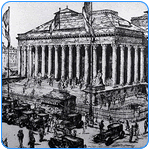 The legal basis for the Brazilian market can be traced to Paris in the 19th century The legal basis for the Brazilian market can be traced to Paris in the 19th centuryDuring the 1950s, some finance companies experimented with ways to get around the usury laws that were hobbling commercial banks. In these years, two types of securities were sold door-to-door: 'letras de câmbio' and 'fundos de acceptance'.
There were a few closed and open-end investment funds, organized under various provisions. The legal basis for collective investment and securitized debt was uncertain and privileges granted to official brokers hindered development of the market. Following the Revolution of 1964, laws introduced new institutions into the market. The philosophy driving this reorganization was, in part, hierachical, and, in part, an allocation of function. In the securities market, the following hierarchy was established:
In addition to these three licenses, a housing finance system was set up, and Real Estate Finance Companies were licensed. These 'imobiliárias' could make indexed loans secured by real estate and could raise money by issuing indexed 'letras imobiliárias'. The result of these reforms was a rapid opening of the market to new players and laws that provided the legal basis for a cornucopia of new operations. Players in the financial market with access to capital scrambled to acquire new licenses and permissions. The São Paulo commercial banks metamorphasized into 'universal banks' with subsidiaries covering a whole range of financial operations. The combination of unrestricted branch banking and universal banking, combined with the Economic Miracle and the economic size of the country, transformed the Brazilian banking system into one of the most modern and efficient in the world. By 1979, Banco Brasileiro de Descontos was the largest bank in Latin America with one thousand branches from Porto Alegre in the south to Manuas in the Amazon. Bradesco offered a full range of financial and securities market services. 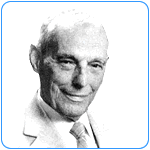 Amador Aguiar, founder of Bradesco. He was one of the greatest bankers of the 20th century Amador Aguiar, founder of Bradesco. He was one of the greatest bankers of the 20th centuryThe Bradesco head office at the Cidade de Deus, outside of São Paulo, was the largest consumer of IBM products and services in the world. The computerization of the Bradesco network surpassed the most advanced U.S. banks. A client could deposit money in a branch in the Amazon and have funds available for withdrawal the next morning from his account at a branch in Copacabana. (In the U.S., in the same year, it took ten days to have a check cleared to a branch just across the street in Florida.) Brazilian commercial banks did not place priority on developing securities markets. However, the preference given by the government to the so-called 'investment banks' put stock brokers and securities exchanges in a secondary position to commercial banks, as was seen in the case of Decree-Law 1401.
In time, the commercial banks got around to developing their securities operations and foreign investment banks were allowed to operate directly in Brazil. Globalization of financial markets and the victory of universal banking has smoothed over the rough spots in the capital market reforms of 1964. |
